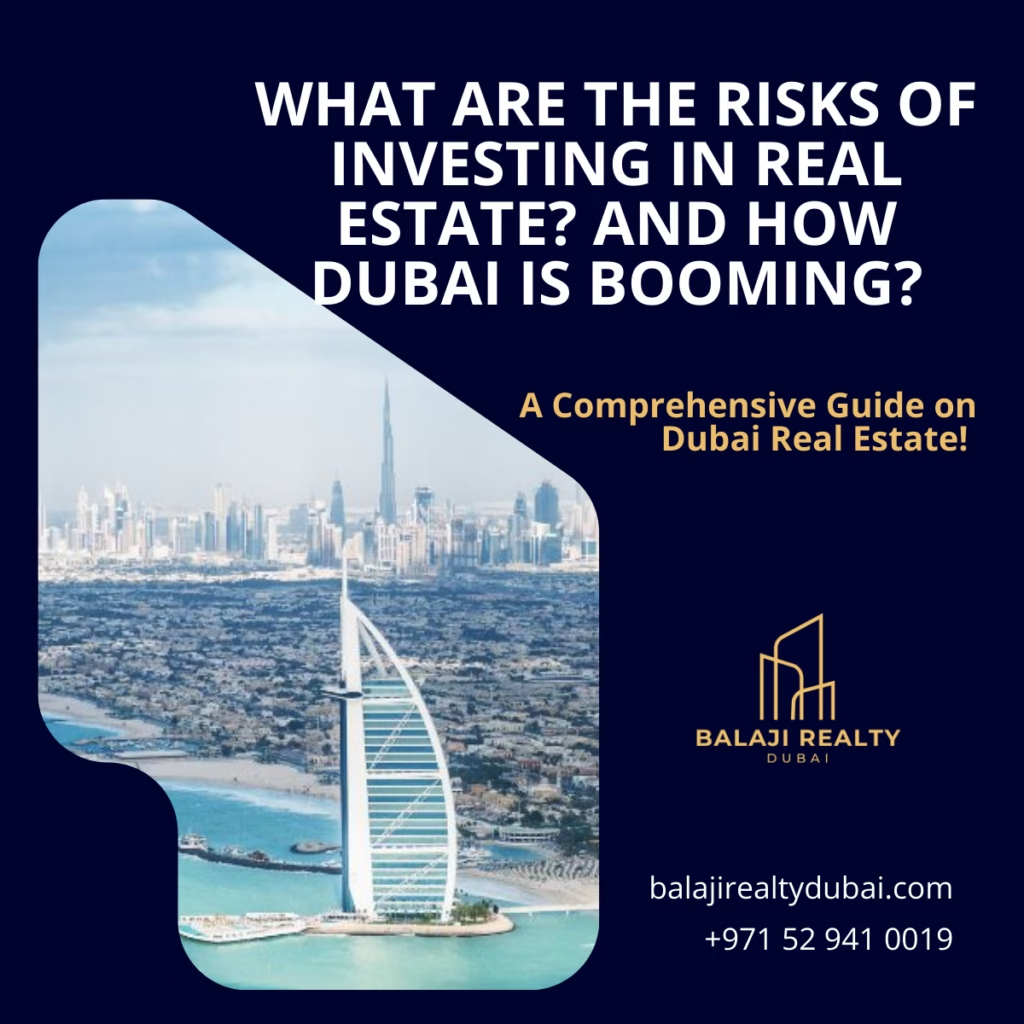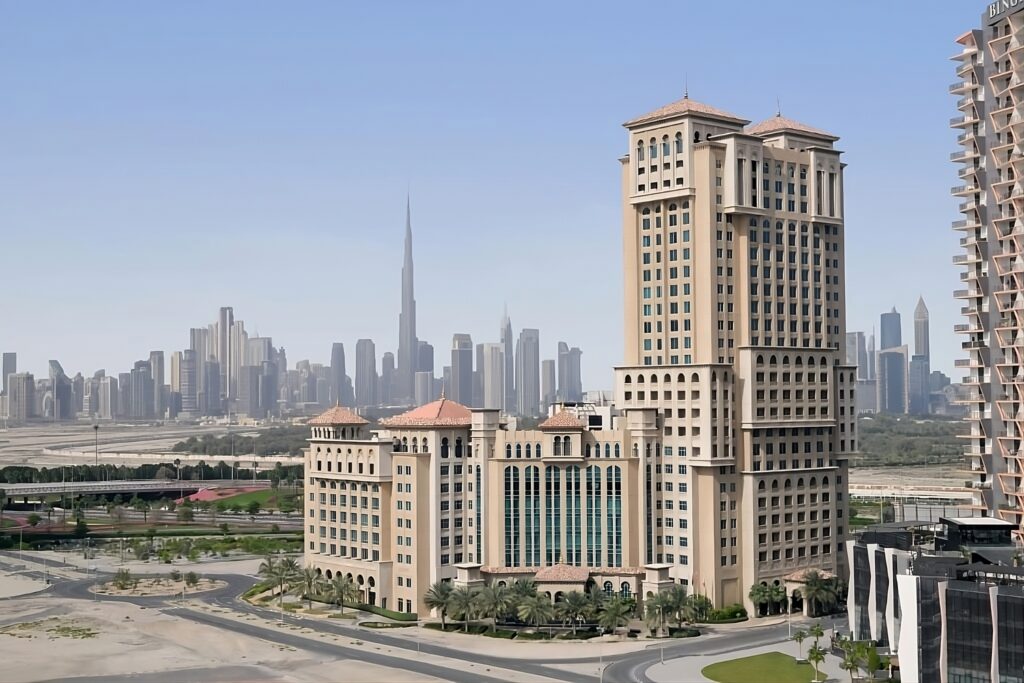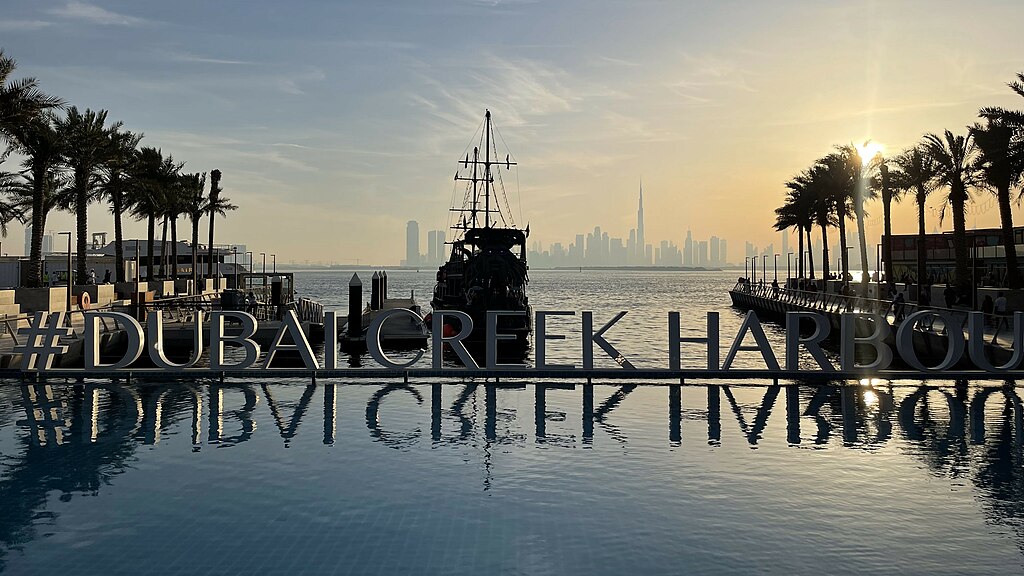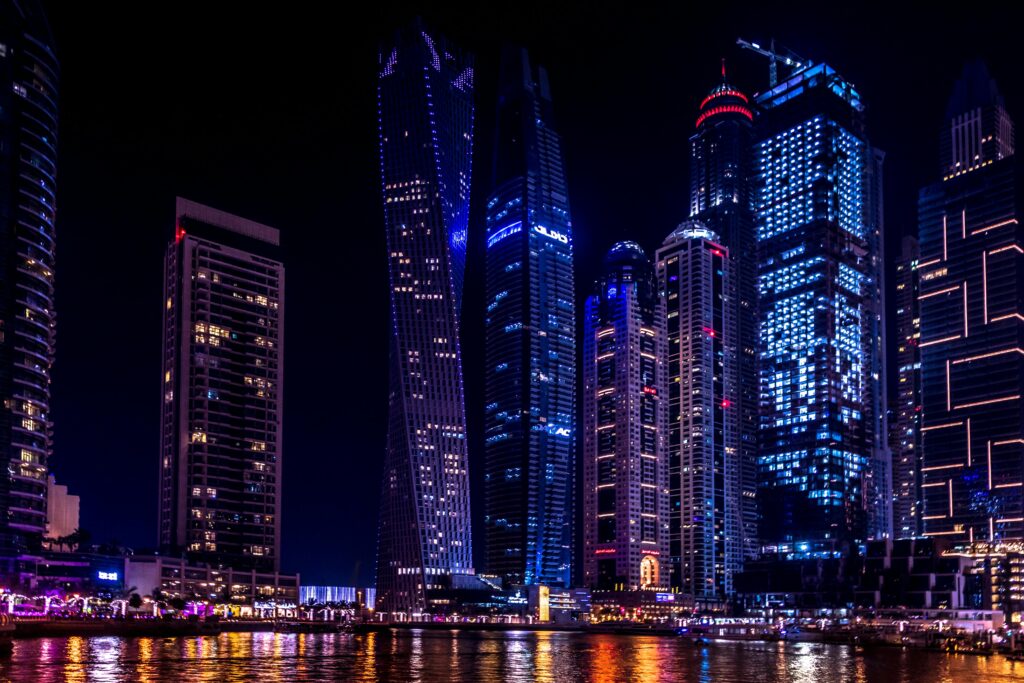
Real estate has long been considered a cornerstone of investment portfolios, offering the potential for both income and capital appreciation. However, like any investment, it comes with inherent risks.
This comprehensive guide explores the general risks associated with real estate investment and then examines how Dubai, despite these risks, is currently experiencing a period of significant growth.
The Balanced Perspective:
Investing in real estate requires a balanced understanding of both potential rewards and inherent risks. This post provides that perspective, offering valuable insights for navigating the market, with a specific focus on Dubai’s current boom.
Key Risks of Investing in Real Estate (General):
These risks apply to real estate markets globally, providing a framework for understanding the potential challenges:

Key Risks of Investing in Real Estate (General):
- Market Fluctuations (Market Risk): Real estate markets are cyclical, experiencing periods of growth, stability, and decline. Economic downturns, changes in interest rates, and shifts in supply and demand can all impact property values.
- Real-Time Example: The rapid rise in mortgage rates in the US in 2022 and 2023 led to a slowdown in the housing market, with some areas experiencing price corrections after a period of rapid appreciation during the pandemic.
- Reference: National Association of Realtors (NAR) and various financial news outlets like Bloomberg, Reuters, and the Wall Street Journal reported extensively on this trend. You can search for articles using keywords like “US housing market slowdown 2023” or “mortgage rates impact housing market.”
- Liquidity Risk: Real estate is not a highly liquid asset. Selling a property can take time, and you may not always be able to sell it at your desired price, especially during market downturns.
- Real-Time Example: During the initial phases of the COVID-19 pandemic, many property owners globally found it difficult to sell their properties quickly due to lockdowns and economic uncertainty, highlighting liquidity risk.
- Reference: Reports from international real estate firms like Knight Frank and Savills, as well as news articles discussing the impact of the pandemic on global property markets, provide evidence of this. Search for terms like “COVID-19 impact on real estate liquidity” or “global property market slowdown 2020.”
- Interest Rate Risk: For investors using mortgages, rising interest rates can increase borrowing costs and reduce profitability.
- Real-Time Example: As mentioned above, the rise in mortgage rates in the US has made homeownership less affordable for many, impacting demand and potentially affecting property values. This is a direct consequence of interest rate risk.
- Reference: The Federal Reserve’s announcements regarding interest rate hikes and their subsequent impact on mortgage rates and the housing market are widely reported in financial news. Look for articles on “Federal Reserve interest rate hikes” and their connection to the housing market.
- Vacancy Risk (Rental Market): If you’re relying on rental income, periods of vacancy can negatively impact your cash flow.
- Real-Time Example: In some city centers that experienced a mass exodus of workers during the pandemic, landlords faced increased vacancy rates as demand for rental properties decreased.
- Reference: Reports on urban migration patterns and rental market trends during the pandemic from sources like the US Census Bureau or city-specific housing reports can confirm this. Search for “pandemic impact on urban rental markets” or “office vacancy rates during COVID-19.”
- Property Management Expenses: Ongoing expenses like maintenance, repairs, property taxes, and insurance can eat into your returns.
- Real-Time Example: The increasing costs of building materials and labor in recent years have made property maintenance and repairs more expensive for landlords globally.
- Reference: Reports on inflation and construction costs from sources like the Bureau of Labor Statistics (BLS) in the US or similar organizations in other countries can provide data on this. Look for reports on “construction cost inflation” or “building material price increases.”
- Development Risks (Off-Plan): Investing in off-plan properties involves risks related to project delays, changes in specifications, or even project cancellation by the developer.
- Real-Time Example: Supply chain disruptions during the pandemic caused delays in construction projects worldwide, impacting investors who had purchased off-plan properties.
- Reference: News articles discussing construction delays and supply chain issues during the pandemic, particularly in the construction sector, provide evidence of this. Search for “construction delays due to pandemic” or “supply chain impact on construction.”
- Regulatory and Legal Risks: Changes in zoning regulations, building codes, or property laws can impact property values and development potential.
- Real-Time Example: Changes in rent control laws in certain cities can impact landlords’ rental income and property values.
- Reference: Local government websites and legal resources are the best sources for information on zoning regulations and property laws. Search for specific city or region names along with “rent control laws” or “zoning changes.”
The Dubai’s Resilience:

The Dubai’s Resilience:
While these general risks exist, Dubai’s current real estate market demonstrates remarkable resilience and strong growth, driven by a unique combination of factors that mitigate many common real estate risks. This section delves into the specifics of Dubai’s current boom.
Several interconnected factors contribute to Dubai’s current real estate market strength:
- Strong Economic Growth and Diversification: Dubai has successfully diversified its economy beyond oil, creating a more stable and resilient foundation. This diversification means that the property market is less susceptible to fluctuations in global oil prices.
- Real-Time Example: Dubai’s thriving tourism sector, hosting major events like Expo 2020 and attracting millions of visitors annually, contributes significantly to its GDP and supports demand for hotels, short-term rentals, and residential properties.
- Reference: Dubai Department of Tourism and Commerce Marketing (Dubai Tourism) publishes statistics on visitor numbers and tourism revenue.
- Government Initiatives and Visionary Leadership: The UAE government’s proactive policies and long-term vision are key drivers of Dubai’s growth. Initiatives like the Dubai 2040 Urban Master Plan provide a clear roadmap for sustainable urban development, attracting investment and fostering confidence in the market.
- Real-Time Example: The Dubai 2040 plan focuses on creating sustainable urban communities, expanding green spaces, and improving infrastructure, which directly enhances the desirability and value of real estate in designated areas.
- Reference: The Dubai 2040 Urban Master Plan document available on the Dubai Municipality website.
- Expo 2020 Legacy: The highly successful Expo 2020 left a lasting positive impact on Dubai’s economy and real estate market. The infrastructure built for the event, including new transportation links and residential areas, continues to benefit the city.
- Real-Time Example: District 2020, the legacy project of Expo 2020, is being transformed into a sustainable and smart city, attracting businesses and residents and creating new real estate opportunities.
- Reference: Information on District 2020 can be found on its official website.
- High Quality of Life and Infrastructure: Dubai offers a high standard of living, with world-class infrastructure, excellent connectivity, diverse leisure options, and a safe and secure environment. This attracts both residents and investors, driving demand for real estate.
- Real-Time Example: Dubai’s excellent transportation network, including the Dubai Metro (Red and Green lines, soon to be expanded), makes it easy to navigate the city and enhances the appeal of properties located near metro stations.
- Reference: Information on the Dubai Metro can be found on the Roads and Transport Authority (RTA) website.
- Controlled Supply in Key Segments: Unlike some previous boom periods, the current market has seen a more measured approach to development in key segments, preventing the oversupply that can lead to price crashes. This controlled supply helps maintain price stability and investor confidence.
- Real-Time Example: While new projects are being launched, developers are generally focusing on meeting existing demand and avoiding excessive speculation. Market reports from property consultancies can provide data on current supply levels.
- Increased Demand from High-Net-Worth Individuals (HNWIs): Dubai has become a magnet for HNWIs seeking safe-haven investments and luxury properties. This influx of wealthy individuals contributes to demand and supports premium property prices.
- Real-Time Example: Reports on global wealth migration often cite Dubai as a top destination for wealthy individuals relocating or investing.
- Reference: Reports from Henley & Partners or New World Health on global wealth migration trends.
- Attractive Visa and Residency Options: The UAE’s attractive visa and residency options, such as the Golden Visa and long-term residency permits, encourage foreign investment in the real estate sector.
- Real-Time Example: The Golden Visa program, offering long-term residency to investors, has been a significant driver of foreign investment in Dubai’s property market.
- Reference: Information on the Golden Visa program can be found on the UAE government portal.
Dubai’s Unique Advantages:
Dubai possesses several unique advantages that not only mitigate some of the general real estate risks but also create a compelling and attractive investment environment. These advantages set Dubai apart from many other global real estate markets.
Dubai’s Unique Advantages in Mitigating Risks and Attracting Investment:

Dubai’s Unique Advantages in Mitigating Risks and Attracting Investment:
- Strong Regulatory Framework: Dubai has established a robust and transparent regulatory framework for the real estate sector, primarily overseen by the Dubai Land Department (DLD). This framework provides legal certainty and protects the rights of both buyers and sellers, minimizing the risk of fraud, disputes, and other legal issues.
- Real-Time Example: The DLD’s online portal provides access to property registration information, transaction data, and legal guidelines, promoting transparency and facilitating due diligence for investors.
- Reference: Dubai Land Department (DLD) website.
- Transparent Market: The DLD plays a vital role in ensuring market transparency by publishing real-time transaction data, market reports, and other relevant information. This transparency empowers investors to make informed decisions based on accurate and reliable data.
- Real-Time Example: The DLD’s property price index provides insights into market trends and price movements in different areas of Dubai, helping investors assess market conditions and make informed investment choices.
- Reference: Dubai Land Department (DLD) property price index and market reports.
- No Property Taxes: One of Dubai’s most significant advantages is the absence of annual property taxes. This significantly reduces the ongoing costs of property ownership and enhances investment returns compared to markets with recurring property taxes.
- High Rental Yields in Certain Segments: While rental yields can fluctuate, certain property segments in Dubai, particularly in growing and affordable locations, continue to offer attractive rental yields compared to many other global cities. This provides a steady income stream for investors.
- Real-Time Example: Smaller apartments and townhouses in areas like JVC and Dubai South often achieve higher rental yields due to strong demand from mid-income tenants. Market data from property portals can confirm current rental yield trends.
- Strategic Location and Connectivity: Dubai’s strategic location at the crossroads of Europe, Asia, and Africa makes it a global hub for trade, tourism, and business. Its world-class infrastructure, including Dubai International Airport (DXB) and Jebel Ali Port, further enhances its connectivity and attractiveness for international investors.
- Real-Time Example: Dubai’s role as a major aviation hub attracts a large number of transit passengers and business travellers, creating demand for short-term rentals and hotel accommodations, which indirectly supports the residential rental market.
- Reference: Statistics on passenger traffic at Dubai International Airport from the Dubai Airports website.
- World-Class Infrastructure and Amenities: Dubai boasts world-class infrastructure, including modern transportation systems, advanced telecommunications networks, and state-of-the-art amenities. This high quality of life attracts both residents and businesses, driving demand for real estate.
- Safe and Secure Environment: The UAE is known for its high levels of safety and security, providing a stable and secure environment for residents and investors. This is a significant factor in attracting foreign investment and driving demand for real estate.
Conclusion:
While investing in real estate inherently involves risks, Dubai’s current market demonstrates resilience and growth due to a combination of strong economic fundamentals, proactive government policies, and unique advantages. By understanding both the general risks and Dubai’s specific strengths, investors can make informed decisions and potentially capitalize on the current market opportunities. When considering “apartments for sale Dubai,” “villas for sale in Dubai,” or “townhouses for sale in Dubai,” understanding the broader context of risk and the current market dynamics is crucial.
Ready to invest in Dubai real estate? Contact me today for expert advice and personalised property recommendations based on your budget and investment goals.
